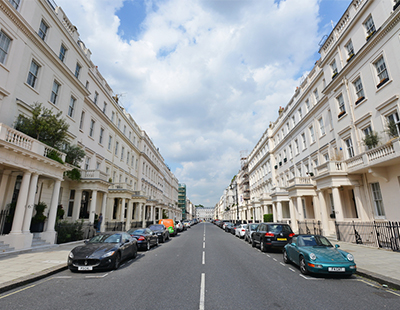In the UK, the ‘right to light’ gives property owners and residents the right to the light that streams into their homes – meaning you shouldn’t plant any new trees in areas that might end up blocking your neighbour’s sunlight in years to come.
And both in the UK and overseas, certain trees are protected and cannot be felled without permission. In fact, in Puglia in Italy, olive trees are protected as local patrimony and you must obtain permission before they can be felled.
Our gardens are our sanctuaries, so it makes sense that many of us want to make changes outdoors so that they’re as enjoyable as possible.
However, before you pull out your spades, shovels and axes, it’s worth getting to grips with relevant laws which, if broken, will land you in a spot of trouble.
1. Overhanging branches
In the UK, if your neighbour’s tree branches are growing over into your garden, legally you are entitled to trim them back to the common boundary. However, any cuttings must be offered back to the tree or hedge owner.
This rule differs in other countries in Europe. In France, for example, the neighbour has a legal obligation to cut them but you do not have the right to do it yourself. However, if it is not full branches but just roots, brambles or twigs, then you can do it yourself.
2. The Right to Light
In the UK, the ‘right to light’ gives property owners and residents the right to the light that streams into the ‘defined apertures’ in their house and other buildings. As a property or landowner, you must abide by this easement – you’re not allowed to build a structure that will block the light into your neighbour’s windows, and that goes for large trees, shrubs and bushes too.
3. Protected trees and plants
Tree Preservation Orders (TPOs) were introduced in the UK in 1947 within the Town and Country Planning Act. They are placed by the Local Planning Authority in order to ‘prohibit the cutting down, uprooting, topping, lopping, wilful damage or wilful destruction of a tree without prior written consent’. So, before you buy a new home or go to cut down a tree on your property, it’s a good idea to check that none of them are protected by a TPO – this is particularly relevant for older homes or those that come with a lot of land. Felling a tree with a TPO can result in fines of up to £20,000!
Similar rules apply to particular trees in different parts of Europe. In Puglia in Italy, for example, olive trees are protected as local patrimony and you have to obtain permission before they are felled, which is rarely granted. The authorities won't even allow people to build on their own land if the project involves the sacrifice of olive trees.
4. Fences and boundaries
There’s a common belief in the UK that as a homeowner, you are responsible for the fence on the left, as you look at your garden. However, this won't always be the case. Due to the UK's legal system there are no strict laws about the boundary lines between two properties. As a result, there is no set of rules about whether you own the fences on the left or right side of your property. However, the fences themselves may give you a clue. If the 'good side' faces into your garden, it's usually yours.
Once you’ve established who’s responsible for what, it’s important to note that you can’t make changes to your side of a neighbour’s fence without their permission. That means painting it, too!
5. Garden sheds and outdoor buildings
In the UK, most garden sheds come under ‘permitted development’. That means they’re incidental to the enjoyment of the dwelling place, rather than being a separate dwelling place in their own right, and so they do not require planning permission.
But even if all you plan to do is store tools, your garden buildings must still meet some stringent criteria, otherwise you’ll have to apply for relevant planning permission. For example, if your shed comes within 2m of the boundary wall or fence, it must be single-story and have an eaves height of no more than 2.5m from ground level. Outbuildings and other additions must also not exceed 50% of the total area of land around the original house.
It’s a different story in Spain, however, as licences are necessary for most building works – even putting up a garden shed. Those who carry out these works without one can be heavily fined.
Christopher Nye is Overseas Property Expert at Your Overseas Home

























Join the conversation
Be the first to comment (please use the comment box below)
Please login to comment